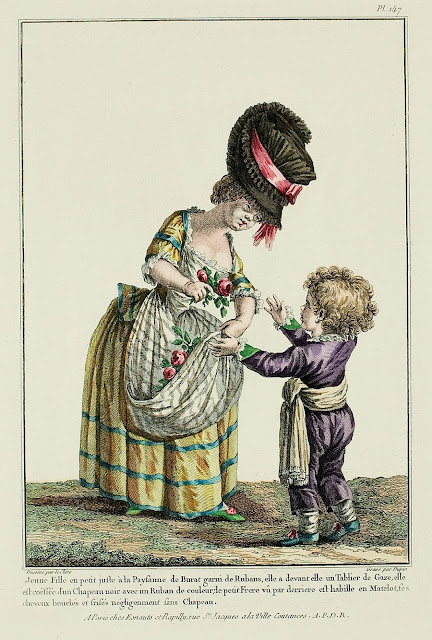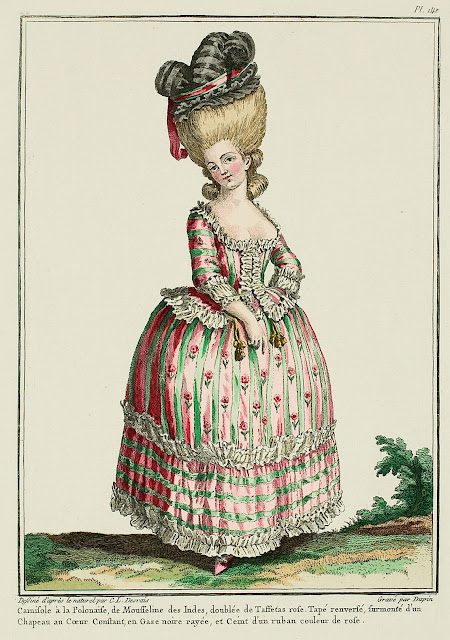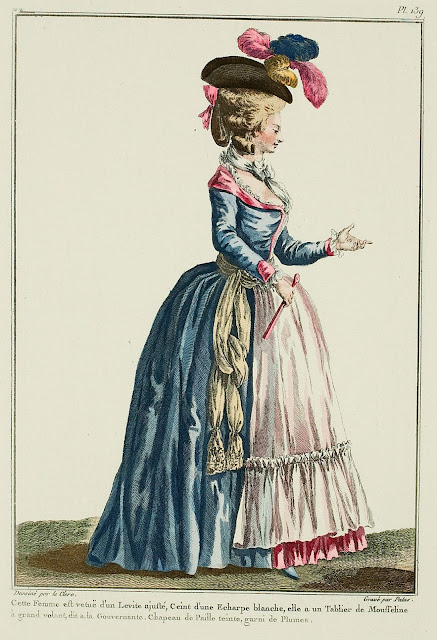Thank you, Choll!

This past week, The Choll (at Thread-Headed Snippet ) gave me the Very Inspiring Blogger award. It means a lot to me! I know I don't sew very much - and now that I've started a job as a full-time temp receptionist I will probably sew even less, even for my Etsy store - but by posting the Galerie des Modes and other fashion plates and miscellaneous information I do hope to inspire people. The instructions are to give seven random facts about myself, and then nominate 15 other bloggers who inspire me. 1. I am a very messy person. My bedroom is just full of stuff (mostly books and clothes), and about half of the family room is covered with supplies and scraps for all the white cotton collars and ruffles and chemisettes I've been making. I just have a tendency to spread out everywhere and take up all available space. 2. Sansa Stark is my favorite character in all of the A Song of Ice and Fire series, and in Game of Thrones . I have been known to get into heated
















